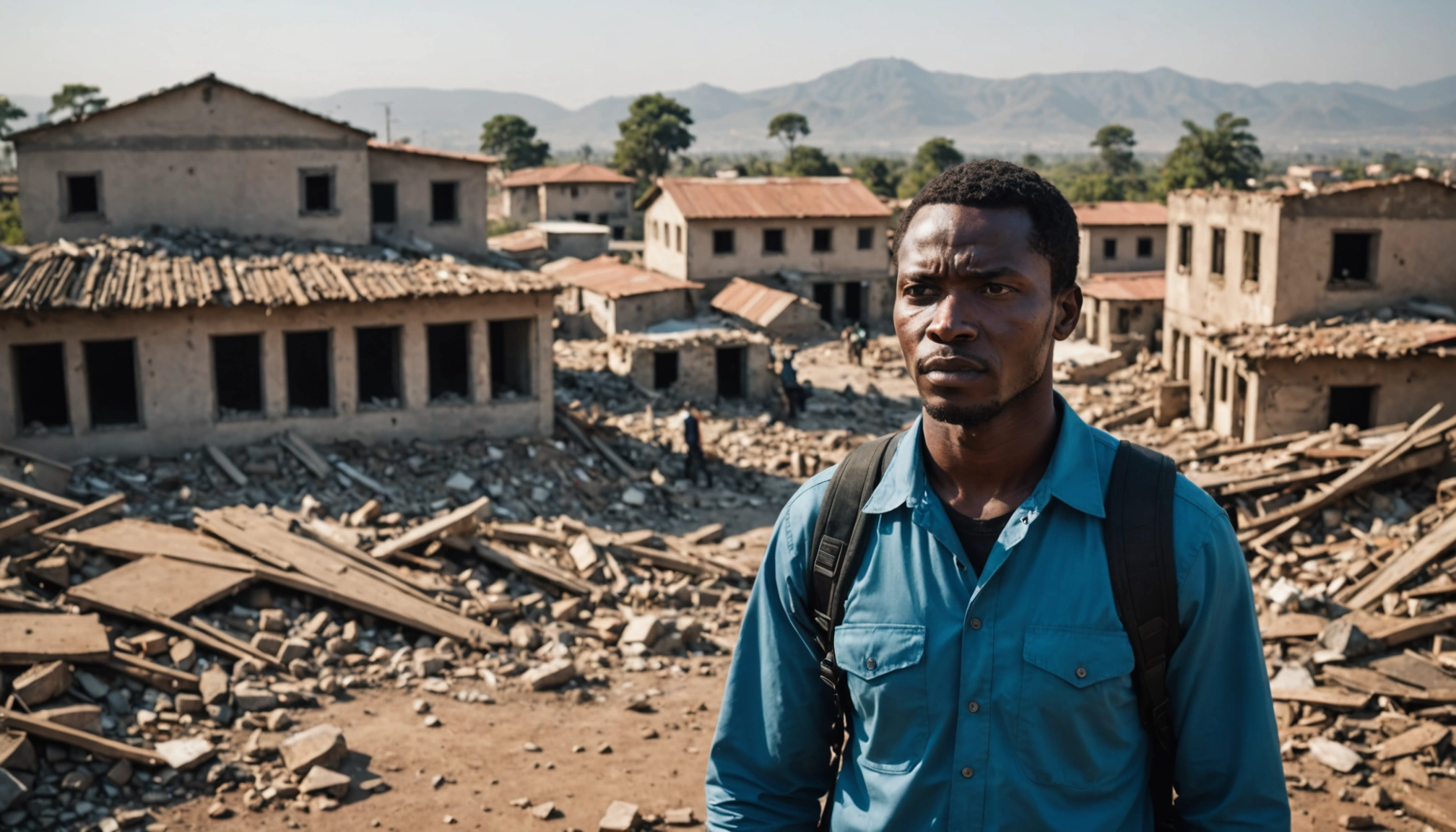Africa's Earthquake Reality: A Call for Preparedness

While often perceived as a tectonically stable continent, Africa faces a real and growing threat from earthquakes. Recent seismic events around the globe, including the devastating earthquakes in Turkey and Syria, have heightened concerns about Africa's vulnerability. Although the African plate is considered stable, history reveals a pattern of potentially damaging earthquakes, some with devastating consequences. Understanding the continent's seismicity, strengthening infrastructure, and implementing effective early warning systems are crucial steps to mitigate future disasters.
Tectonic Activity and Seismic Zones
Africa's seismicity is largely influenced by its complex tectonic setting. The continent is fragmented by several active seismic zones, including the East African Rift System (EARS), the North African thrust and fold belt, the Cameroon Volcanic Line, and the Congo Basin.
The EARS, a 6,000-kilometer-long continental rift system, is one of the most prominent seismic features on the continent. Stretching from the Red Sea and Gulf of Aden to southern Africa, the EARS is characterized by widespread volcanism and shallow earthquakes resulting from the extension of the Earth’s crust. The Nubia and Somalia plates are separating along this rift, creating new microplates and seismically active zones.
North Africa, particularly the region bordering the Eurasia plate, experiences moderate to large earthquakes due to the collision between the two plates. The Atlas Mountains, a chain of mountains spanning Morocco, Algeria, and Tunisia, mark this active plate boundary. Central Africa, including the Cameroon Volcanic Line and the Congo Basin, also experiences seismic activity, though it is generally considered to be of moderate to low intensity. Southern Africa has also experienced both large and small magnitude earthquakes.
Historical Earthquakes and Their Impact
Africa has a history of destructive earthquakes that have caused significant loss of life and property damage. In 1960, an earthquake in Agadir, Morocco, with a magnitude of 5.8, resulted in an estimated 12,000 to 15,000 fatalities. This event underscored the vulnerability of the region to even moderate earthquakes.
In 1983, a magnitude 6.4 earthquake struck Guinea, West Africa, highlighting the potential for intraplate seismicity, even in regions considered stable. More recently, in 2006, a magnitude 7.0 earthquake hit Mozambique, causing casualties and damage. In 2009, Malawi experienced a magnitude 6.2 earthquake, further demonstrating the ongoing seismic risk in the region. The largest instrumentally recorded events in Africa occurred in May 1990, ~300 km north of Lake Albert, with two M 7.1 earthquakes striking four days apart.
These historical events serve as stark reminders of the need for increased preparedness and mitigation efforts across the continent.
Vulnerability and Risk Factors
Several factors contribute to Africa's vulnerability to earthquakes. Rapid urbanization, coupled with inadequate building codes and construction practices, has led to a proliferation of informal settlements and non-engineered buildings, particularly in the Great Rift Valley region. These structures are highly susceptible to damage even from moderate shaking, putting millions of people at risk.
Poverty and limited access to resources further exacerbate the vulnerability of communities to earthquakes. Many people lack the financial means to build earthquake-resistant homes or to prepare for and respond to disasters. The lack of awareness and education about earthquake safety also contributes to the risk.
The Global Earthquake Model (GEM) has developed an Africa Earthquake Hazard and Risk model that highlights the potential for significant average annual losses due to ground shaking in residential, commercial, and industrial buildings. This model underscores the urgent need for risk reduction measures to protect lives and livelihoods.
Early Warning Systems and Preparedness
Recognizing the growing threat, various initiatives are underway to strengthen earthquake early warning systems and preparedness in Africa. The African Union Commission (AUC), with support from international partners, has established the Africa Multi-Hazard Early Warning and Early Action System (AMHEWAS) Programme. This program aims to improve the availability, access, and use of disaster risk information for early warning and action across the continent.
AMHEWAS focuses on several key areas, including hazard monitoring, risk assessment, risk communication, and community engagement. The program also supports the development of interoperable situation rooms and the dissemination of early warning messages to member states.
The United Nations' "Early Warnings for All" initiative aims to ensure that everyone on Earth is protected by early warning systems by the end of 2027. This initiative is particularly relevant for Africa, where many communities lack access to timely and accurate information about impending disasters.
Community-based disaster preparedness programs are also crucial for building resilience to earthquakes. These programs focus on educating people about earthquake safety, developing evacuation plans, and stockpiling essential supplies. Essential earthquake safety techniques include staying away from windows, hanging objects, and heavy furniture, seeking refuge under sturdy furniture, and protecting the head and torso from falling objects.
International Collaboration and Support
Addressing the earthquake risk in Africa requires strong international collaboration and support. Organizations such as the United Nations Office for Disaster Risk Reduction (UNDRR), the World Bank, and UNESCO are working with African governments and regional organizations to strengthen disaster risk management capacity.
The Global Earthquake Model (GEM) provides open-source tools and resources for assessing earthquake hazard and risk. The Regional Integrated Multi-Hazard Early Warning System (RIMES) assists member countries in establishing and maintaining early warning systems within a multi-hazard framework.
Increased investment in infrastructure, particularly in earthquake-resistant buildings and transportation networks, is also essential. Foreign investment can play a critical role in supporting these efforts.
Conclusion
Africa faces a complex and evolving earthquake risk. While the continent may not be as seismically active as other regions of the world, the vulnerability of its population and infrastructure makes it susceptible to significant losses from even moderate earthquakes. By understanding the tectonic setting, strengthening building codes, implementing effective early warning systems, and fostering community-based preparedness, Africa can reduce its earthquake risk and protect its people from future disasters. International collaboration and sustained investment are crucial to achieving this goal and building a more resilient Africa.


